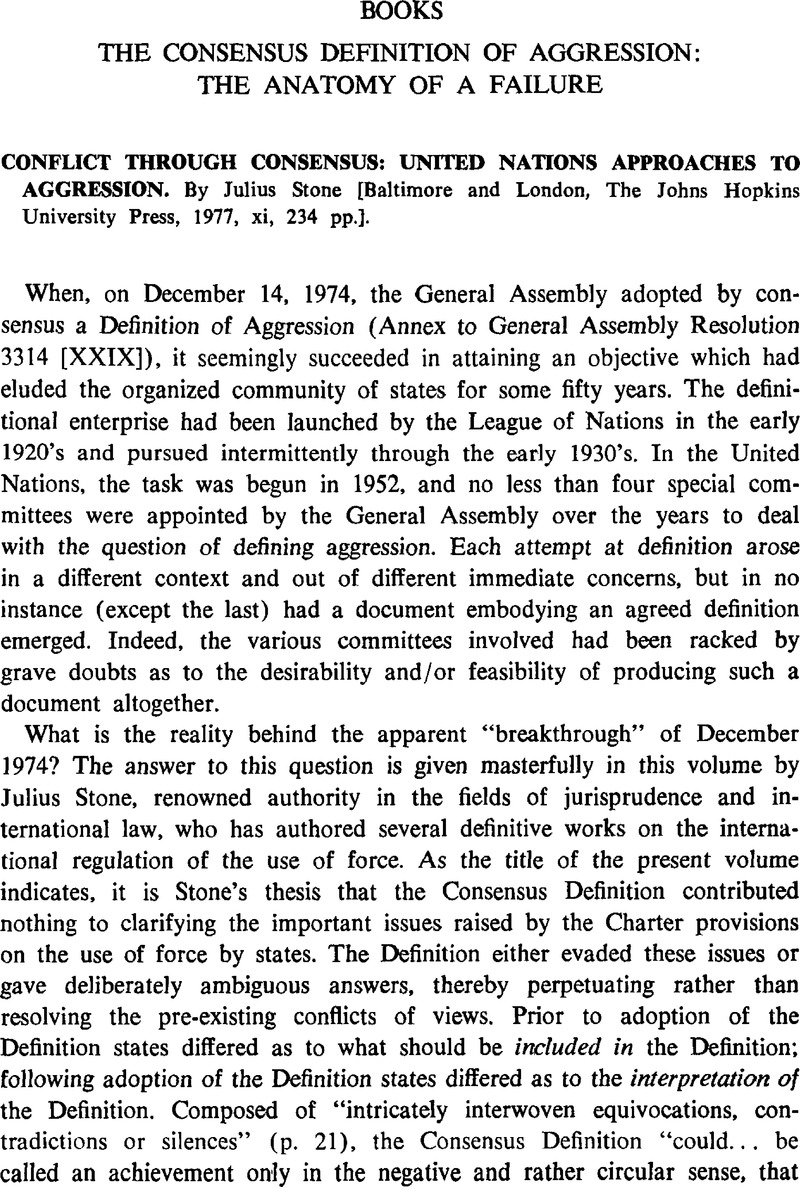No CrossRef data available.
Published online by Cambridge University Press: 12 February 2016

1 See Stone, Julius, Aggression and World Order (London, Stevens, 1958) 38–40Google Scholar; and Conwell-Evans, T.P., The League Council in Action (London, Oxford University Press, 1929) and especially pp. 35 ff.Google Scholar
2 “Nothing in this Definition, and in particular article 3, could in any way prejudice the right to self-determination, freedom and independence, as derived from the Charter, of peoples forcibly deprived of that right and referred to in the Declaration on Principles of International Law concerning Friendly Relations and Cooperation among States in accordance with the Charter of the United Nations, particularly peoples under colonial and racist rćgimes or other forms of alien domination; nor the right of these peoples to struggle to that end and to seek and receive support, in accordance with the principles of the Charter and in conformity with the above-mentioned Declaration.”
3 Article 6, in particular, states categorically: “Nothing in this Definition shall be construed as in any way enlarging or diminishing the scope of the Charter, including its provisions concerning cases in which the use of force is lawful.” See also paragraph 4 of the Preamble; Articles 2 and 4 of the Definition which reaffirm the Security Council's discretion to determine the existence of aggression; and the numerous clauses throughout the Definition in which crucial phrases are qualified by reference to the UN Charter.
4 Article 3 enumerates several acts which “shall, subject to and in accordance with the provisions of article 2, qualify as” acts of aggression, among them:
“(f) The action of a State in allowing its territory, which it has placed at the disposal of another State, to be used by that other State for perpetrating an act of aggression against a third State;
“(g) The sending by or on behalf of a State of armed bands, groups, irregulars or mercenaries, which carry out acts of armed force against another State of such gravity as to amount to the acts listed above, or its substantial involvement therein.”
5 Even this achievement was somewhat beclouded by the terms of Explanatory Note 4 which stated that Article 5(3) was “not to be construed so as to prejudice the established principles of international law relating to the inadmissibility of territorial acquisition resulting from the threat or use of force”. Legally, Stone argues, the Note did not attain its avowed objective since the “established principles” on the matter were based on the ex inluria principle (p. 63).